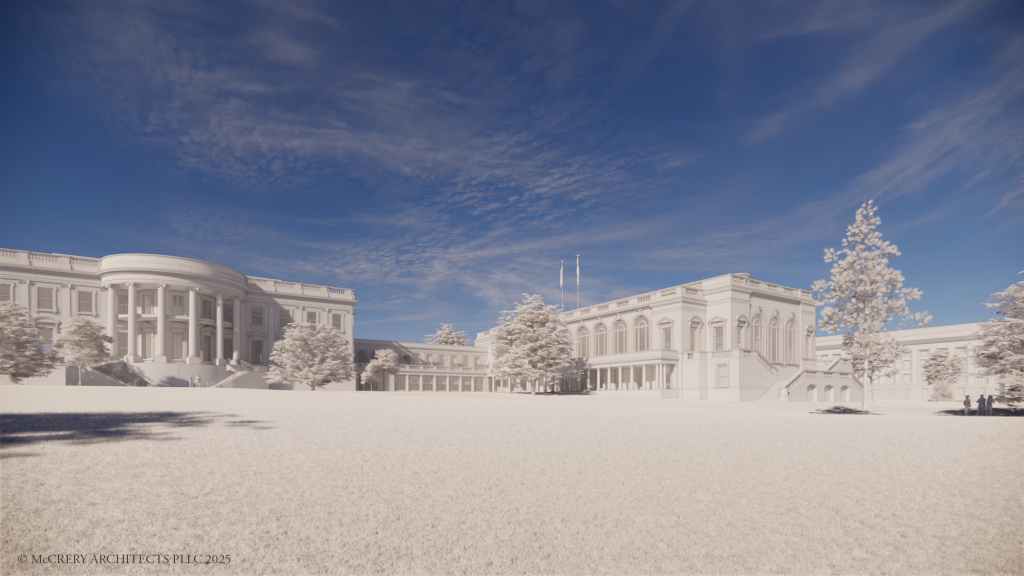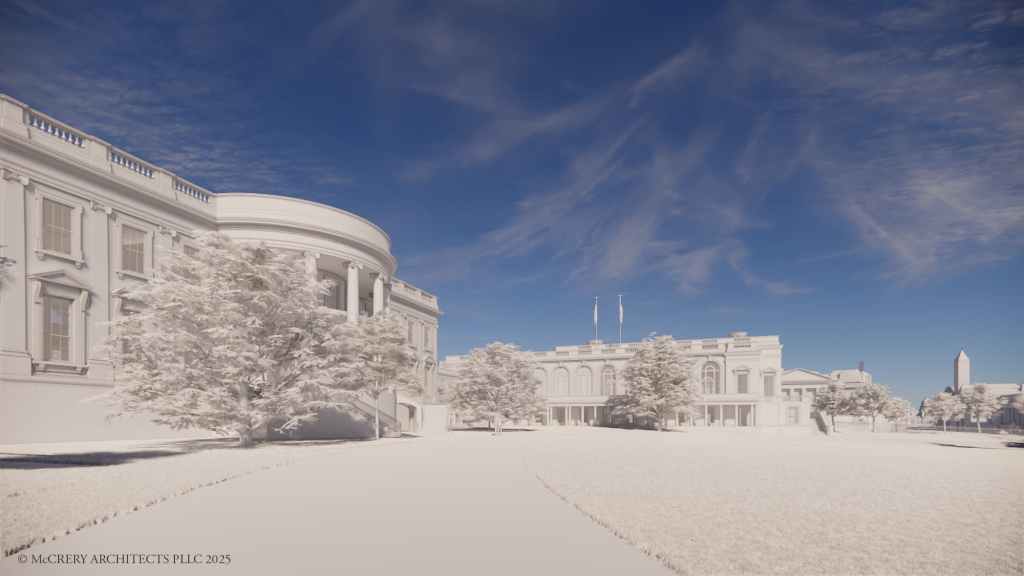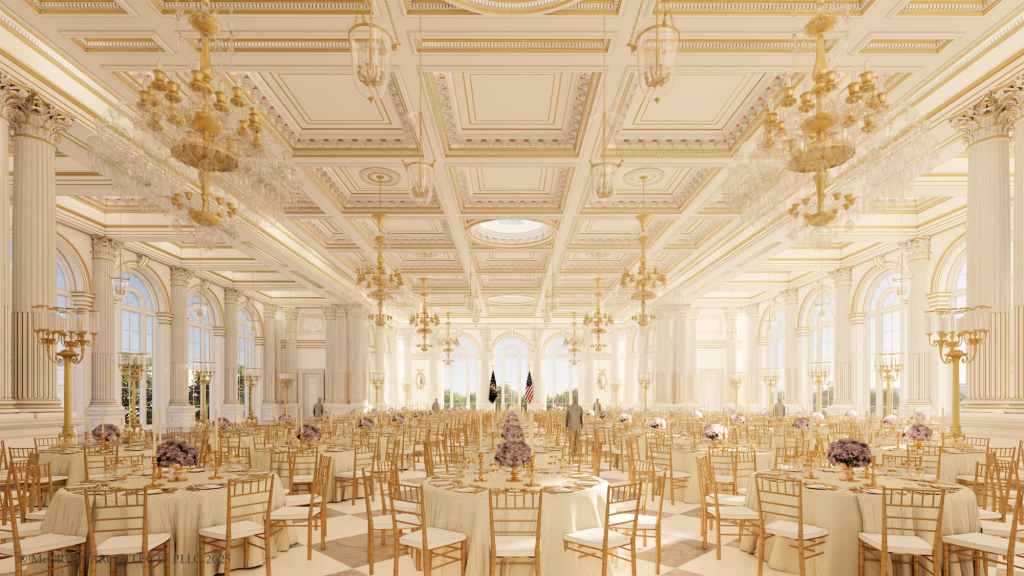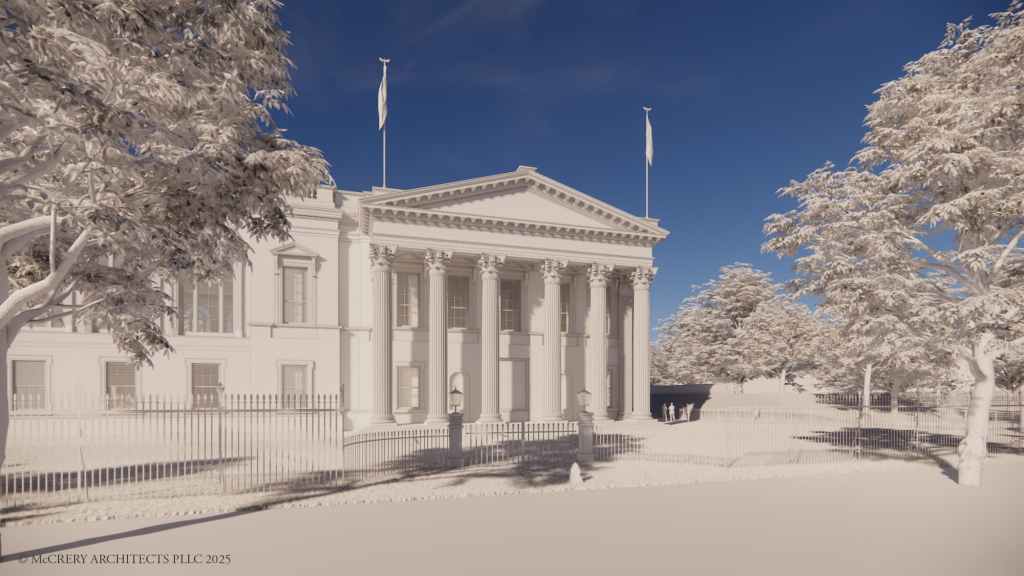A monumental change may be coming to America’s most iconic address. The Trump White House has unveiled plans for a $200 million, 90,000-square-foot State Ballroom addition to the White House complex—one of the most significant proposed structural changes to the presidential residence in modern history.
A Grand Vision for State Functions
Announced this week, the new ballroom is being pitched as both a practical improvement and a historic architectural achievement. Currently, the White House can host only 200 seated guests in the East Room, often forcing administrations to erect what the White House called “large and unsightly tents” nearly 100 yards away. The new State Ballroom would triple that capacity to 650 and provide a permanent, ornately crafted space for high-profile state functions.
Design and Construction Teams Revealed

Trump, who has reportedly convened recent meetings with the National Park Service, the Secret Service, and the White House Military Office to coordinate design and security logistics, selected Washington-based McCrery Architects to lead the design effort. Known for their expertise in ecclesiastical and civic architecture, McCrery Architects have built a reputation for blending classical design principles with contemporary functionality. Their portfolio of churches, courthouses, and public buildings demonstrates a sensitivity to historic context and proportion—qualities that make them a strong candidate for such a symbolically charged commission.
“Presidents in the modern era have faced challenges hosting major events at the White House because it has been untouched since President Harry Truman,” said firm CEO Jim McCrery. “I am honored that President Trump has entrusted me to help bring this beautiful and necessary renovation to The People’s House.”
Architecture with a Nod to History

The ballroom will be constructed on the site of the East Wing, which has undergone numerous renovations since its original construction in 1902. The new structure will be “substantially separated from the main building of the White House,” the administration states, but its theme and architectural language will remain “almost identical” to the original. Construction will be led by Clark Construction, with AECOM providing engineering services. The project is expected to begin in September 2025 and be completed before the end of Trump’s term.
Privately Funded, Publicly Contested
Trump and a coalition of “patriot donors” have pledged to fully fund the structure, while the Secret Service will oversee required security enhancements.
“President Trump is a builder at heart,” said White House Chief of Staff Susie Wiles, adding that the president is “fully committed to working with the appropriate organizations to preserve the special history of the White House while building a beautiful ballroom that can be enjoyed by future administrations and generations of Americans to come.”
Preservationists Raise Red Flags

Not everyone is convinced. The American Institute of Architects (AIA) issued a sharply worded letter to the Committee for the Preservation of the White House, expressing “grave concern” about the project’s transparency and its potential to compromise the building’s symbolic and architectural integrity.
Echoing those concerns, Professor Peter Smirniotopoulos, a real estate and urban policy expert, sees the ballroom as part of a broader pattern. “As with President Trump’s executive order seeking the creation of only classically informed federal buildings, as well as his recent gaudy Rococoization of the Oval Office, it is beyond peradventure that what Mr. Trump wants most is to impose HIS ‘tastes,’ such as they are, on America and the world,” Smirniotopoulos said.
He pointed to Trump’s controversial redevelopment of Washington’s Old Post Office Pavilion as an instructive precedent. “The General Services Administration cited Trump’s company numerous times for failing to adhere to preservation standards set forth in the lease,” Smirniotopoulos recalled. “Not long after the contract was awarded, the Trump Organization dismissed renowned preservation architect Arthur Cotton Moore, whose inclusion on the proposal team was critical to winning the bid in the first place. If past is prologue, Trump will disregard and even flaunt preservation concerns in creating this abomination.”
Five Key Recommendations from the AIA
“While the project may be privately funded, the White House belongs to the American people,” the AIA wrote. “It demands the highest standards of stewardship.”
“For over 100 years, AIA has embraced our role as a perpetual guardian of the White House’s architectural integrity,” the letter states, referencing a directive established by President Theodore Roosevelt himself. “This responsibility guides our recommendations to ensure that any modification to this national treasure honors its historical and symbolic significance.”
To that end, the AIA outlined five recommendations:
- Qualifications-Based Selection (QBS): Criticizing the pre-selection of McCrery Architects, the AIA called for a formal, merit-based competition for choosing the design team.
- Historic-Preservation Review: Urging compliance with federal preservation standards to protect the site’s neoclassical heritage.
- Transparency and Public Accountability: Calling for open reporting on funding, procurement, and design decisions.
- Design Proportionality: Warning that the scale and placement of the addition could overwhelm the White House’s historical character.
- Collaboration and Expertise: Offering the AIA’s assistance in ensuring high performance, sustainability, and resilience.
A Monument or a Misstep? The Debate Continues
“The White House is not just the residence of the president—it is a public monument to democracy,” the AIA wrote. “This is more than an addition to a building. It is a transformation to an irreplaceable symbol of our democracy—guided by a process that is preservation-first, performance-driven, and accountable to the public.”
The AIA’s recommendations are grounded in its Framework for Design Excellence, which links design decisions to measurable outcomes for preservation, building performance, occupant health and safety, and long-term stewardship.
Legacy or Overreach?
As construction planning proceeds, the ballroom is already drawing national attention—and igniting debate over the line between legacy-building and overreach. The administration promises ongoing public updates at whitehouse.gov/visit, but for many architects and preservationists, the most important designs may be the ones not yet drawn.
Whether the project becomes a gilded milestone in presidential legacy-making—or a flashpoint in the ongoing battle over national preservation—remains to be seen. But as design drawings take shape and bulldozers prepare to roll in, one thing is certain: this ballroom is already center stage in a deeper cultural debate.
